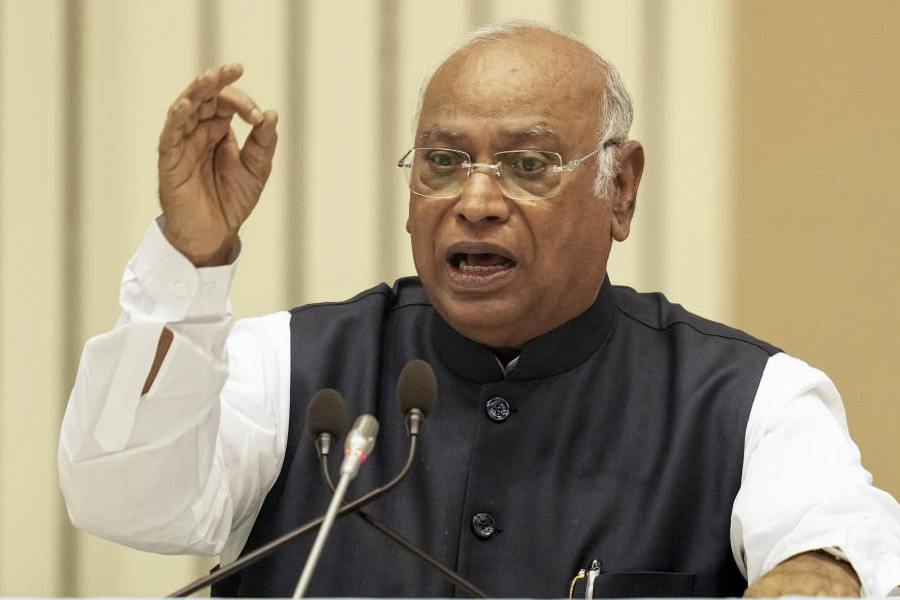
Geneticist Abed Chaudhury was working to increase the yield of rice when he remembered a folk tale from his childhood. Once upon a time, the tale went, there was an old woman who was so poor that she had to survive on " nyara dhan" picked from the fields. And what was this "bare paddy"? It was the grain that grew in the bare fields after the paddy had been harvested.
That got Chaudhury thinking. Was it possible that there were varieties of rice that could yield a second harvest?
Chaudhury had given up his career in Australia - as a full-fledged researcher with the CSIRO Division of plant industry in Canberra - and returned home to Bangladesh in 2002. "I wanted to apply the science I had learnt to real life. I was working with plant seeds so it was natural for me to start working with rice, the primary food crop of Bangladesh."
He had torn down his ancestral thatched hut in Sylhet and built a state-of-the-art laboratory. He started collecting varieties of rice and growing them in the extensive agricultural lands he had inherited. "I think it is time for this back-to-the-village movement. Science for the sake of science is all very well, but it's real potential can be unlocked only when you put it to use."
A rice plant, explains Chaudhury, normally produces 65 sheaves or clusters of grains. Of these around 40 are mature at first harvest. The rest are wasted when the plant is cut down to about 10 centimetres from the ground and left to rot.
Since he is a believer in user-led innovation, Chaudhury worked with the farmers to develop a strain of rice that can be harvested more than once. After the crop matures, which takes about four months, farmers harvest the paddy. Chaudhury decided to change the way paddy is cut. He wanted to leave 30 to 45 centimetres of the plant standing after the first harvest.
The new method also required that the field be fertilised again, using half the amount of fertiliser used for the first crop. The immature sheaves continue growing and can be harvested after 50 to 55 days. While the new method was tried on 10 types of rice, only four could be successfully harvested twice.
Says Chaudhury, "My target is to transform the annual rice plant into a perennial plant. It saves costs and gives high yields."
It is also climate-friendly agriculture. How? Rice plants produce substantial amounts of methane, because of the semi-aquatic nature of cultivation. Whenever the land is tilled, the gas is released into the air. If "extended life rice" - which is what Chaudhury has named the variety - is cultivated, you do not need to till the land for the second harvest.
In Bangladesh, yields from traditional paddy varieties are about 3,000kg of rice per hectare. Yield from extended life rice is expected to be about 9,000 to 10,000kg per hectare.
"The Bangladesh government has been very cooperative and extended life rice is now being grown at 40 test sites," says Chaudhury.

In the meantime, Chaudhury is working on his latest passion - bringing back coloured rice into the grocery list of every Bangladeshi.
"The Aush dhan grown in Bengal as well as Bangladesh was originally red in colour. It was rice mills that discouraged coloured rice because they wanted all the rice they produced to be of a uniform colour."
He harks back to the olden practice of eating diverse and brightly coloured food. "The early humans who chose to eat brightly coloured food were healthier and lived longer."
Arun Lahiri Majumder, senior professor of the department of plant molecular and cellular genetics at Calcutta's Bose Institute, agrees.
Fruits, vegetables and even rice that is naturally coloured is good for us because it has antioxidants. The colour is provided by anthocyanins, the same compound that makes red wine so healthy.
Specifically, red rice - and also black rice - has something called C3G (cynadin 3-glucoside), which is supposed to be very healthy.
Well, Chaudhury is fighting to bring back traditional varieties of rice in Bangladesh. Maybe it is a lesson we should learn from our neighbour.
Code red
Benefits of red rice
• Is high in iron, which prevents anaemia
• Has zinc, which improves immunity and helps digestion
• Has a low glycaemic index and is therefore good for diabetics
• Contains C3G that reduces inflammation and risk of cancer











